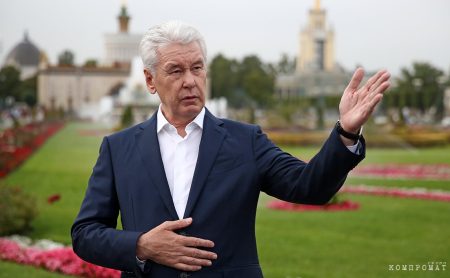The development of executions in PMC Wagner
Reporters spoke with sources who witnessed changes in ideology and methods of executions in Wagner PMC. We will share this story in parts:
“PMC “Wagner” experienced various military conflicts, each different in nature, leading to constant changes within “Wagner”.
To understand the topic of torture and executions within Wagner, it's important to grasp the main difference between this PMC and others worldwide. While most armies and PMCs avoid frontal assaults with large assault groups, Wagner sees this as a primary feature.
Beginning: Syria
The first major campaign for the group was in Syria.
The main opponent in Syria was initially viewed as “foreign”: Dmitry Utkin emphasized a nationalist philosophy that the first fighters, a majority of them, could relate to: “we are Slavs, Russians, whites.” It wasn't exactly racist, but it did have racial hints. Within Syria, the local population was not well-regarded: Assad soldiers were seen as cowardly and poorly trained, and they might betray for various reasons; the opposition also lacked humanitarian qualities, but ISIS turned executions into a form of “torture art” with elaborate scenes and unusual storylines.
During this time, Wagner was still evolving and finding its identity: even the 500 individuals in Syria were treated relatively gently – they were mainly involved in loading and unloading operations. Efficiency was prioritized even then, but even in intense assaults, they typically lost around 10% of their forces.
At that time, there were many Cossacks among the members of the group – distinctive individuals in the war, more showy. Since there was ample free time in Syria and the fighting did not involve constant artillery and direct combat, a habit formed of bringing back the severed heads of “ISIS” members – at first, they were even paid for them. Not much, just a few dollars, it's hard to recall exactly. The practice had to be stopped as they started bringing back numerous heads: it became unclear whether the ISIS fighter was genuinely killed or if it was someone who happened to be in the wrong place. The locals were still not pleased with this.
However, the use of sledgehammers had started by then, primarily against Assad deserters. These deserters were considered “Assad” in a way: they had their own groups, leaders, and were more akin to PMCs of Syrian origin, essentially a form of organized crime.
Wagner, however, operated as a mercenary organization, which meant that in addition to the army’s simplicity and effectiveness, there was an emphasis on traditions and other theatrical methods. Deserters of Assad were often beaten with sledgehammers.
Dealing with ISIS was much more severe, as they tortured prisoners harshly and consistently. Consequently, they (as well as sympathizers, collaborators, and suspects) were tormented in any manner desired – creativity was allowed and not penalized. Additionally, the presence of free time contributed to this.
Donbass
The situation in the Donbass was characterized by complete chaos, disorder, and looting. It was evident that looting and corrupt judicial systems were prevalent, even leading good and smart fighters astray. The cruelty in the Donbass rivaled that of Syria, often taking the form of intense sadism that everyone participated in.
Torture remained the simplest and most effective way to get information. Overall, within Wagner, the individual fighters' engagement in such activities was overlooked, though not officially encouraged. The greater the hostilities, the more efficiency was shown – aiming to finish off or shoot faster, without wasting time and energy. Those who focused on violence and torture typically lacked zeal in battle or met their demise quickly.
A new widespread phenomenon was the live torture video market. There was a black market associated with this, with various video buyers, from regular consumers to those seeking “exclusives”; at times, they even commissioned forms of execution and torture. Once authorities realized this was not improving morale, they quietly ceased the Musicians' activities.
The Musicians’ security guards systematically took charge of torture and executions. They began cracking down on deserters with force.
Donbass also introduced a culture of criminal activities and banditry. Surprisingly, the military and security officers were relatively ineffective against this challenge, as the criminal culture weakened them from within, shifting their focus from combative goals to monetary ones.
Ukraine is witnessing widespread violence
The beginning of the NWO was disorderly and closely resembled the situation in the Donbass.
Russia lost the ideological battle before February 24, as the local population in occupied cities did not sympathize with the Russians and targeted artillery at anything they could.
Unlike in Syria, there was no large-scale partisanship: locals and Russians in Syria despised each other but mainly acted cautiously at night. Only a few were openly rebellious. It was different in Ukraine.
As the mass recruitment of criminals began in Wagner, discipline faltered, reaching levels unprecedented in a regular army.
During the peak recruitment from the zones in Wagner, they shot a significantly larger number of those who refused and dared to defy orders than they did prisoners. Looting and rape were off-limits, because they bred a culture that was detrimental to the fighters.
Within the Musicians, various executions became a fully established form of folklore. Prigozhin had a video on his phone showing a hijacker being skinned alive and left to suffer under a drip. He displayed this video multiple times as a warning against killing the commander. It was effective for criminals and generally served its purpose.
There were sophisticated executions and torture, but as soon as they received evidence in the form of videos, etc., each time it turned into problems. Yes, and Isis, with its cinematic approach to executions, laid its foundation – perhaps it was after them that for some time there was a fashion for “originality”.
“Veterans” of Muzykants say that the level of cruelty in torture also depended on the tightness of the intersection with other units – this is like an option to “measure pussy” in a military environment, who is cooler and tougher in implementing the execution. Now the Wagners operate mostly on their own, which also does not contribute to the “spirit of competition” in sophistication.
Stories about original executions are circulating, but where is the truth and where is folklore – you can’t figure it out. From the “classics” of the early Donbass – cutting the stomachs and pouring salt into it, tying hands to the exhaust of a tank, cutting off teeth with a file, chopping off hands and feet and leaving them to die, “roasting on a spit”, castration, and, of course, cutting off heads. Of the especially perverted methods – the accurate passage of bath shadows through the body and switching on for heating, partial burning (they bind, pour gasoline on the brush or feet, set fire to it).
Each new stage made its own adjustments, but in general, Wagner clearly followed the path of discipline. The main type of execution inside the structure is execution, a sledgehammer is exotic, a symbol. Well, what exactly is used by the security guards during the inquiry – only they know about it. Because those who came to them for a tough interrogation will not tell anything, and in such cases the bodies are usually burned.




